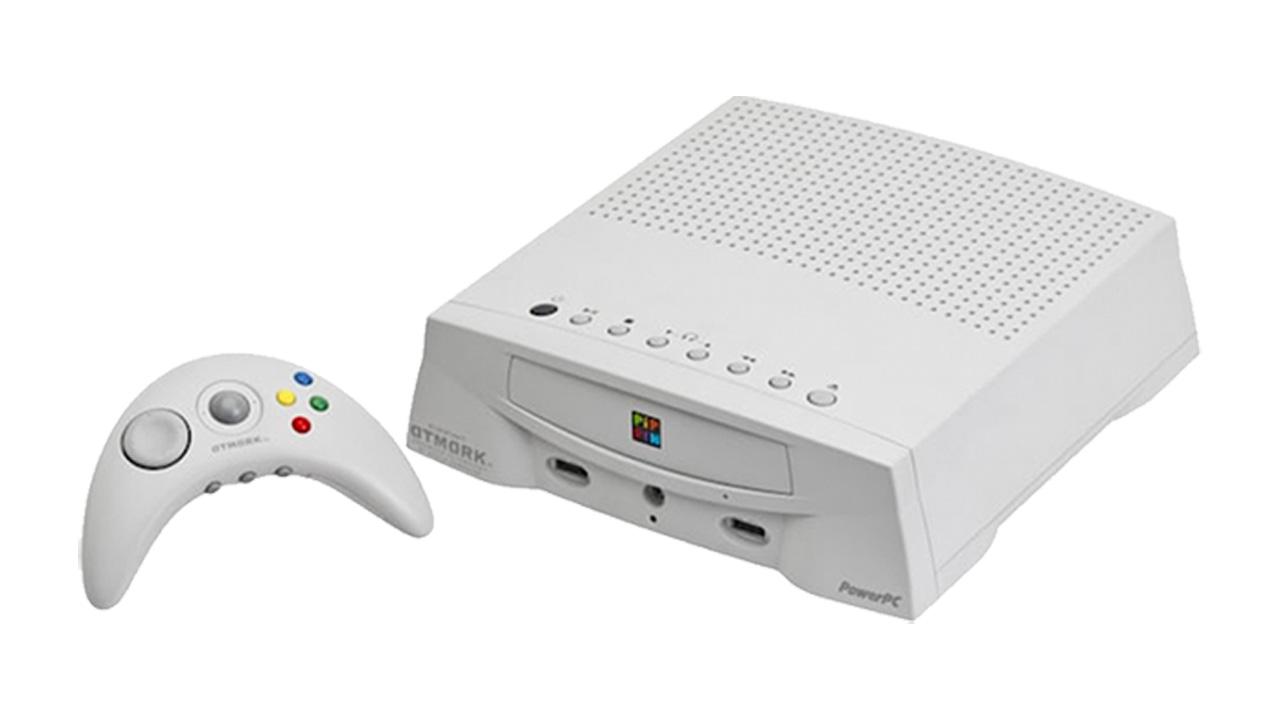The Apple Pippin, released in 1996, was an innovative addition to the console gaming market. This console was unique because it went beyond just gaming and was made to include personal computer features as well. Developed in collaboration with Bandai, the Apple Pippin was marketed towards a niche audience. The console’s significant feature was its backward compatibility, allowing users to play CD-ROM games from Macintosh and Windows computers. While the console did not have much success in sales, it made an impact on the gaming industry by introducing a new type of gaming console. The Apple Pippin’s legacy transcended gaming and demonstrated the potential for combining multimedia and technology. In this article, we will delve into the history and overview of Apple Pippin gaming console and its significance in gaming history.
Pippin’s Development and Marketing
In the early 1990s, Apple Computer decided to venture into the gaming market by licensing a gaming console based on their technology. After considering several options, Apple collaborated with Japanese toy manufacturer Bandai to produce the Pippin gaming console. Despite its innovative hardware and impressive specifications, Pippin struggled to gain a foothold in the increasingly competitive gaming market.
One of the issues that released Pippin was its expensive launch price, which put it out of reach for many gamers. Additionally, Pippin’s small game library compared to multi-functional consoles such as Nintendo 64 and PlayStation meant that there was limited demand for the console. Furthermore, Pippin suffered from poor availability outside of Japan, which further limited its distribution and sales.
Apple’s marketing strategy for Pippin was aimed at a wider audience beyond traditional gamers. The console was positioned as a multimedia device, featuring web browsing capabilities and the ability to run educational software. The idea was to break into the educational market, which at that time was expected to be large and lucrative. However, this approach failed to captivate both gamers and the educational market.
Despite its niche appeal, Pippin never took off as Apple had hoped. The gaming market was already crowded, and Pippin faced stiff competition from established players such as Nintendo, Sega, and Sony. Innovation and technological advancement were not enough to grant success to Pippin, in fact, its sales figures were poor, and the console was discontinued just a year after its release.
While Pippin’s lackluster sales may be seen as a failure, it shouldn’t negate the innovative technology that went into its design and development. The console was ahead of its time and laid the groundwork for Apple’s future success in the gaming and consumer electronics markets.
Pippin’s Hardware and Performance
Pippin’s technical specifications and components were quite impressive and revolutionary for its time. The console’s unique feature was its ability to access the Internet, which was a rare feature in the gaming industry in the mid-1990s.
Additionally, Pippin’s specifications were based on the PowerPC technology used in Apple’s Macintosh computers. Pippin was equipped with a 66 MHz PowerPC 603 processor, a 14.4 kbps modem, 100 VG-AnyLAN networking, and a CD-ROM drive.
Compared to other consoles of the time, such as the Sony PlayStation and Nintendo 64, Pippin’s hardware was relatively weak. However, the console’s focus was not entirely on power but on its unique features, such as its multimedia capabilities, including CD audio, photo CD, and the internet.
Pippin’s gameplay performance and user experience were generally positive, although the console’s power limitations could occasionally lead to some slowdowns or issues with certain games. The lack of a proper game controller also posed some challenges to gamers who were used to traditional console handheld controllers.
Overall, Pippin’s hardware and performance were unique, but its focus on the internet and multimedia rather than powerful gameplay capabilities ultimately led to its downfall. Regardless, Pippin’s innovative approach serves as a testament to Apple’s commitment to pushing the boundaries of technology.
Pippin’s Game Library
Despite its short lifespan, Pippin had a decent selection of games. The console featured a library of around 80 titles.
Many Pippin games were unique, interesting, and innovative at the time. Pippin’s game library included:
- Gundam Tactics: Mobility Fleet 0079: A strategy game based on the popular Gundam anime franchise.
- Macross Digital Mission VF-X: A flight simulator game based on the popular Macross anime series.
- Atmark Mahjong: An interesting twist on the classic Mahjong game that was popular in Japan.
Other popular titles like Super Marathon, Primal Rage, and PGA Tour 96 were also available for Pippin. These games provided a fun and enjoyable gaming experience that was unique to Pippin.
The availability of CD-ROMs made it easy to port existing Macintosh titles to the Pippin platform. Titles like Myst and The Journeyman Project are remarkable examples of games that were successfully ported to Pippin.
Despite its small game library, Pippin made significant contributions to the gaming industry. The console leveraged CD-ROMs, streaming media, and other technologies, paving the way for modern gaming consoles to follow.
Pippin may not have been a commercial success, but its unique games and legacy live on. The console is still admired by gamers and collectors today, making it an essential addition to any gaming collection.
Legacy and Impact of Pippin
Apple Pippin, despite its short-lived existence, has had a considerable impact on the gaming industry. It came at a time when the gaming industry was focusing on innovative consoles and technological advancements. Although Pippin was not commercially successful, the console’s fundamental concept and design have been adapted and reused in more modern gaming systems. Let’s take a look at how Pippin influenced the gaming industry, its cultural significance, and its influence on later generations of consoles.
Discussion on how Pippin influenced the gaming industry
Pippin was an attempt by Apple to enter the video game industry, and while it was not a commercial success, it did influence the future of gaming. The design and features of Pippin paved the way for modern gaming systems to be developed, including some of the most popular consoles such as Xbox and PlayStation. Apple’s Pippin broke the mold, providing a user-friendly platform that was easy to use and appealed to an older audience. Its technical capabilities, coupled with its multimedia compatibility, set a standard for future gaming consoles.
Cultural Significance of Pippin
Pippin’s cultural significance cannot be understated, as the console’s release signaled a turning point in gaming history. It was the first gaming console developed by a computer company, introducing modern-day multimedia use in gaming. Additionally, Pippin’s release coincided with a shift in gaming content from pure entertainment to more diversified media suitable for different audiences, such as the introduction of interactive encyclopedias and reference books.
Pippin’s influence on later generations of consoles
Although Pippin saw a relatively short time on the market, its impact was far-reaching, with several manufacturers copying its design structure, marketing strategies, and user interface over the years. Pippin’s design helped catalyze a push towards a more interactive gaming experience, influencing the development of more sophisticated and flexible consoles for years to come. Without Pippin, the gaming industry would likely still be far behind in the development of improved gaming experiences.
In retrospect, Apple Pippin has cemented its place in gaming history as an initial prototype console that shaped the framework for future consoles. Its legacy and influence will undoubtedly continue to impact the gaming world for the foreseeable future.
Conclusion: Apple Pippin (1996) Retrospective
In conclusion, the Apple Pippin holds a significant place in the history of gaming industry. The console was developed in partnership with Bandai, and marketed as an opportunity for developers to create games that could be played on a range of multimedia devices. Pippin was not a commercial success in terms of sales, but it did offer a unique gaming experience to those who invested in it.
When it comes to Pippin’s performance, it was certainly not the best console in the market, but it surely had some impressive features like its built-in modem, CD-ROM drive, and Apple’s QuickTime technology. Pippin also offered some exclusive games to its users that played a part in the console’s cultural significance in the gaming industry.












